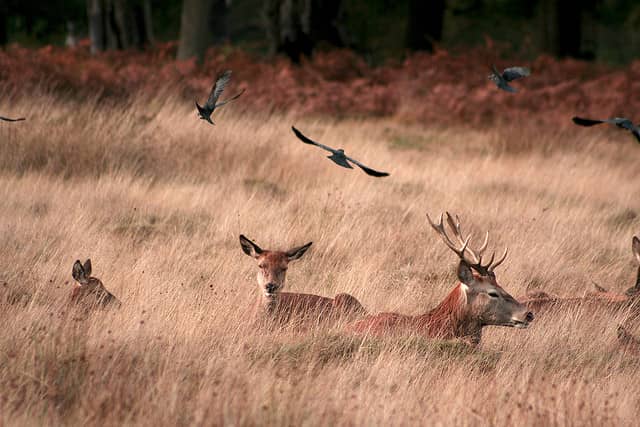Antlered Does: Not Necessarily Freaks of Nature
OutdoorHub Reporters 12.03.12

A hunter who harvested a doe with antlers has become somewhat of a local celebrity in his hometown of Kingfisher, Oklahoma. It’s such a rare sight for many hunters to see that a fellow hunter said he “freaked out” when the deer was brought to him to weigh it.
“Well, I turn it around, and I thought, ‘Holy blank, blank, blank this is a doe,'” Oklahoma resident Rodney Mueggenborg told local TV station WRCB. “I have been hunting 32 years and never seen anything like it before,” Mueggenborg said. “It was a beautiful, healthy doe with horns.”
Other hunters were amazed at this rare find, which some may find surprising to hear isn’t very rare at all. Researchers estimate that one in every 1,000 to 6,000 white-tailed female deer produce antlers, according to the Minnesota Department of Natural Resources (DNR). Black-tailed and mule deer can also produce antlers and the ratio may be even lower in some regions. For example, a study in Alberta, Canada in 1985 determined that about one in 64 adult does had antlers in the area.
The DNR adds that what normally causes antler growth in females is a testosterone surge from either a “hormone imbalance, first pregnancy, tumors, or degenerative conditions of the ovaries or adrenal glands,” and the antlers develop differently in every female. An initial surge of testosterone will cause the antlers to develop from the pedicels, or buttons, found on the top of the head. Many females only have the first surge of testosterone, which leads antlers to be small or to never shed their velvet, displaying velvet well into the winter. Those with a second surge of testosterone will grow a full rack and the bone of the antler will harden and polish fully.
Such testosterone levels may very well have been what led to an Illinois doe to grow a 30-point rack. It was harvested by Richard Lomas west of Salem, Illinois at the end of 2011. Similarly, there was a 27-point doe harvested in Kansas in 2008.
Yet, researchers have evidence to believe that these deer are more than does with antlers.
“Deer that appear to be does with polished antlers are almost always reproductively malformed males, which will have a second testosterone surge that causes the antler velvet to shed,” according to the DNR. “Postmortem research on these deer shows most are cryptorchids, hermaphrodites with male organs predominant, or pseudohermaphrodites (animals with external female genitalia but internal male reproductive organs).”
It was unclear whether any of the harvested deer mentioned above were in fact a mix of both sexes, but a thorough organ examination by your state’s game department or a veterinarian should turn up some interesting results.

